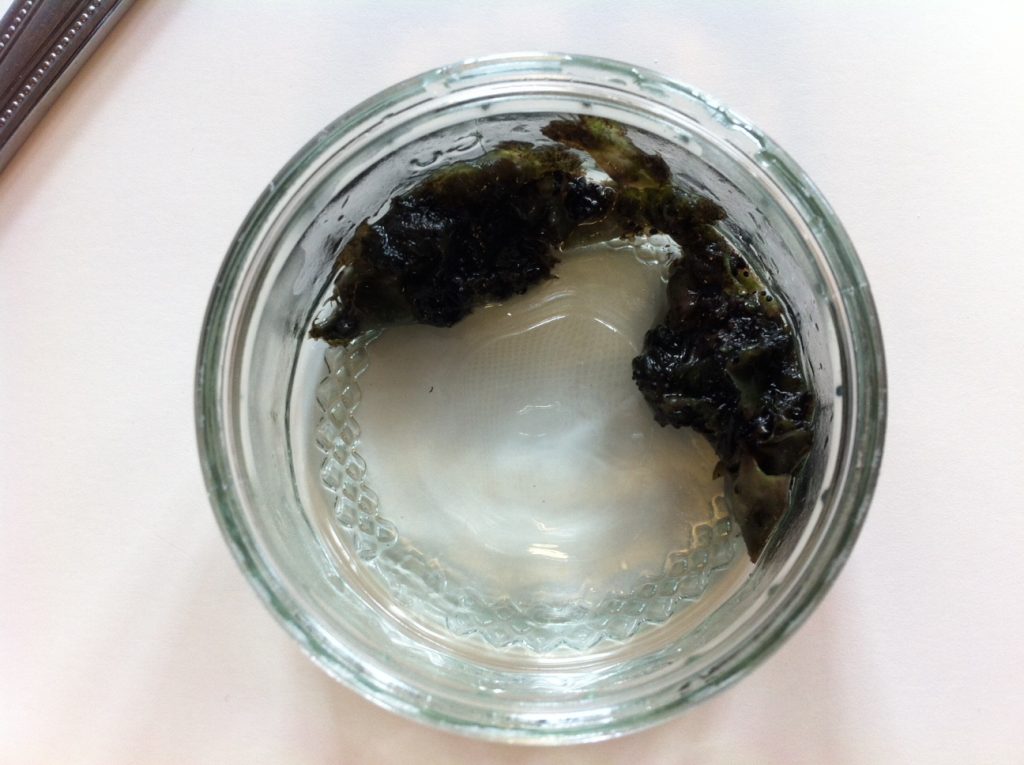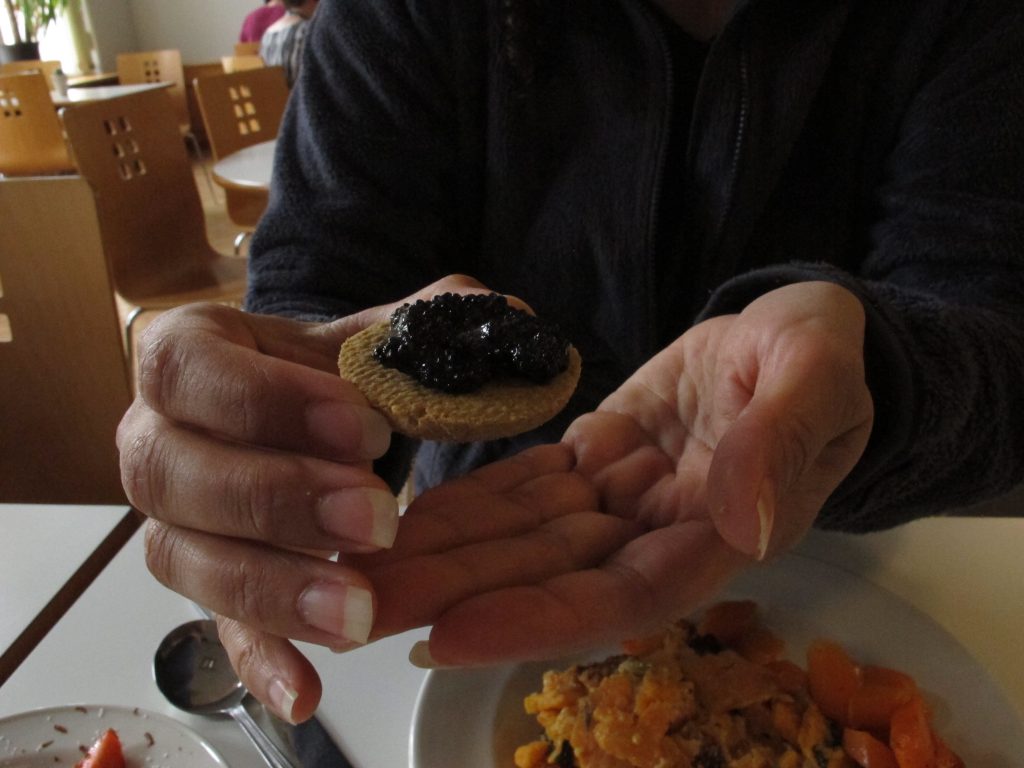Nordic ‘alimentation noire’: a culinary experiment, RBGE Canteen, 29 June 2016 (a continuation of Franklin Arctic Canadian Collections at RBGE – Part 1).
What did the ‘tripe de roche’ that Franklin’s men ate for survival taste like? There was only way to find out, and I thought that while Adriana was in Scotland she might take the opportunity of getting a bit closer to her subject than would be possible in California. So Saturday found me climbing a lofty Scottish peak, where I was able to scrape a few small pieces of Umbilicaria cylindrica from a rock – this is not one of the species eaten on the expedition, but is closely related to U. arctica, which was.
On the expedition the men were unable to remove the ‘bitter principle’ (the lichen acids) from the tripe de roche, which caused them, especially poor Robert Hood, to suffer terribly from colic. To overcome this, and so as not to poison my guest, I briefly boiled the lichens in water: the result was a deeply unappetizing, mucilaginous sludge.
 Richardson related that the ‘Indians’ mixed their lichen with fish roe, so on my way to work I stopped at a well-known, upmarket supermarket and purchased a jar of lump-fish roe. Fortunately I had not mixed the animal and fungal matter, as I then discovered that Adriana was a vegan. So she had to have her sludge unadulterated, if on a luxurious base unavailable to Franklin – a miniature Stromness oatcake (though he could have stocked up on these, as he stopped in Orkney en route for Canada).
Richardson related that the ‘Indians’ mixed their lichen with fish roe, so on my way to work I stopped at a well-known, upmarket supermarket and purchased a jar of lump-fish roe. Fortunately I had not mixed the animal and fungal matter, as I then discovered that Adriana was a vegan. So she had to have her sludge unadulterated, if on a luxurious base unavailable to Franklin – a miniature Stromness oatcake (though he could have stocked up on these, as he stopped in Orkney en route for Canada).
This, therefore, was ‘canapé à la Franklin – dans le temps de l’austérité’. Being a sybarite I preferred ‘canapé à la Franklin – de luxe’, the version with added caviar.
Result: Adriana’s canapé tasted of nothing, mine only of the salty roe.


